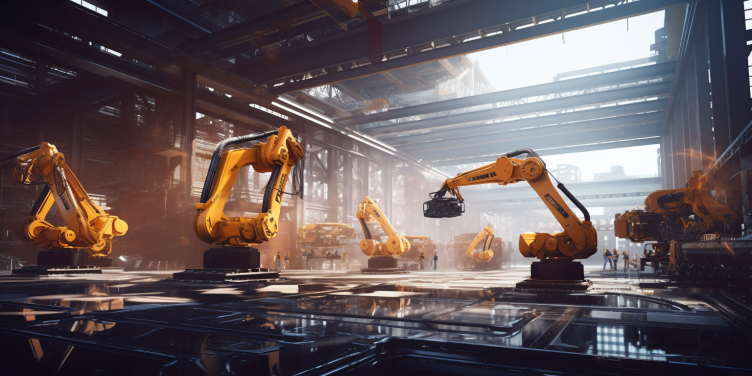Introduction to Modern Mechanical Construction
Mechanical construction has made significant strides in recent years, with many innovations improving efficiency, performance, and sustainability. Understanding these advancements is essential when designing HVAC systems, integrating modern plumbing solutions, or working on structural elements. For instance, companies like https://dmi-kc.com/services/mechanical-construction/ provide specialized services that utilize advanced technology and sustainable methods to address the changing demands of current projects. The modern landscape of mechanical construction is complex yet exhilarating. With the intersection of traditional methods and cutting-edge technologies, practitioners must stay updated with current trends and strategies. This article dives into these innovative practices, sustainable designs, and future trends, making it a valuable resource for construction and engineering professionals aiming to advance their expertise and keep up with industry developments.
The Transition to Sustainable Designs
Sustainability is no longer an optional aspect of construction; it’s a necessity driven by the urgent need to address climate change and resource conservation. Transitioning to sustainable designs helps reduce environmental footprints while enhancing building performance. Techniques like utilizing energy-efficient systems, incorporating renewable energy sources, and using eco-friendly materials are at the forefront of this transition. For instance, replacing traditional HVAC systems with energy-efficient models can significantly reduce energy bills while significantly reducing greenhouse gas emissions. Moreover, sustainable designs are not just beneficial for the environment; they offer long-term economic advantages through reduced operational and maintenance costs. As more regulations push for green buildings, these sustainable practices are becoming a standard in new construction and renovation projects.
Emerging Technologies in Mechanical Construction
Integrating Building Information Modeling (BIM) has revolutionized mechanical construction by providing a comprehensive digital representation for precise project planning. It minimizes errors, reduces waste, and facilitates better coordination among architects, engineers, and contractors. Every project phase, from design to construction and maintenance, can be managed more effectively with BIM. Additionally, prefabricated components are becoming more prevalent in the industry. These factory-made parts are assembled on-site, significantly reducing construction time and labor costs. Prefabrication also allows for better quality control as components are manufactured in a controlled environment. Technologies such as 3D printing are making inroads, offering unprecedented customization and precision. They enable the fabrication of intricate components that would be challenging or unfeasible with conventional methods.
Case Studies: Successful Projects Using Innovative Practices
Real-world examples highlight the successful application of innovative practices in mechanical construction. One such case is the integration of advanced HVAC systems in commercial buildings, providing superior indoor air quality and significant energy savings. These systems are created to be more effective and straightforward to upkeep than standard HVAC systems, so they are a favored option for new builds and renovation projects. Another example is the use of modular construction techniques. Building modules are constructed in a controlled factory environment in modular construction and later moved to the construction site for assembly. This approach significantly shortens project timelines and reduces costs by minimizing site disruptions and weather-related delays. These instances show that creative methods can result in prosperous, productive, and enduring building endeavors, providing insights that can be utilized in upcoming projects.
The Importance of Skilled Labor
The significance of experienced workers remains crucial despite the rise of modern technologies. The demand for proficient professionals operating modern tools and technologies is rising. According to a recent Forbes article, skilled labor is crucial in a technology-driven world, and this holds particularly true for the mechanical construction industry. Industry professionals with hands-on experience and technical training are essential for ensuring that modern construction projects meet the highest quality and safety standards. Their expertise helps bridge the gap between traditional practices and contemporary innovations, providing seamless integration and optimal performance. As the industry continues to evolve, the role of skilled labor becomes increasingly vital in realizing the full potential of new technologies and sustainable practices.
Challenges and Solutions in Mechanical Construction
Mechanical construction faces several challenges, including regulatory compliance, cost management, and integrating new technologies. Navigating these hurdles requires innovative solutions and a proactive approach. For instance, regulatory compliance can be particularly challenging as standards and codes are continuously updated to reflect new safety measures and environmental concerns. An example of an innovative solution is modular construction, which addresses the issue of cost management by reducing waste and labor expenses. Additionally, digital twin technologies offer a promising avenue for overcoming challenges. Teams can use a virtual model of the construction project to simulate various situations and detect problems before they occur. This proactive strategy helps guarantee that projects are finished within the set timeline and budget while enhancing quality and efficiency.
Future Trends to Watch
- Increased Use of Renewable Energy Sources
- Advancements in Smart Building Technologies
- Greater Focus on Sustainability and Green Building Certifications
The future of mechanical construction looks promising, with several trends set to take center stage. Advancements in intelligent building technologies will offer enhanced control over building systems, leading to greater efficiency and occupant comfort. The increased popularity of smart thermostats, lighting systems, and energy management tools will allow for improved monitoring and optimization of building performance. Furthermore, sustainability will be emphasized further, with more buildings aiming to obtain green building certifications such as LEED and BREEAM.
Conclusion and Final Thoughts
In conclusion, the field of mechanical construction is undergoing a transformative phase. By embracing sustainable designs, incorporating emerging technologies, and valuing skilled labor, the industry is well-equipped to tackle future challenges. These innovative practices improve efficiency and performance and pave the way for a more sustainable and eco-friendly construction landscape. Being knowledgeable about these methods can help professionals in the industry stay ahead and guarantee successful results for their projects.






